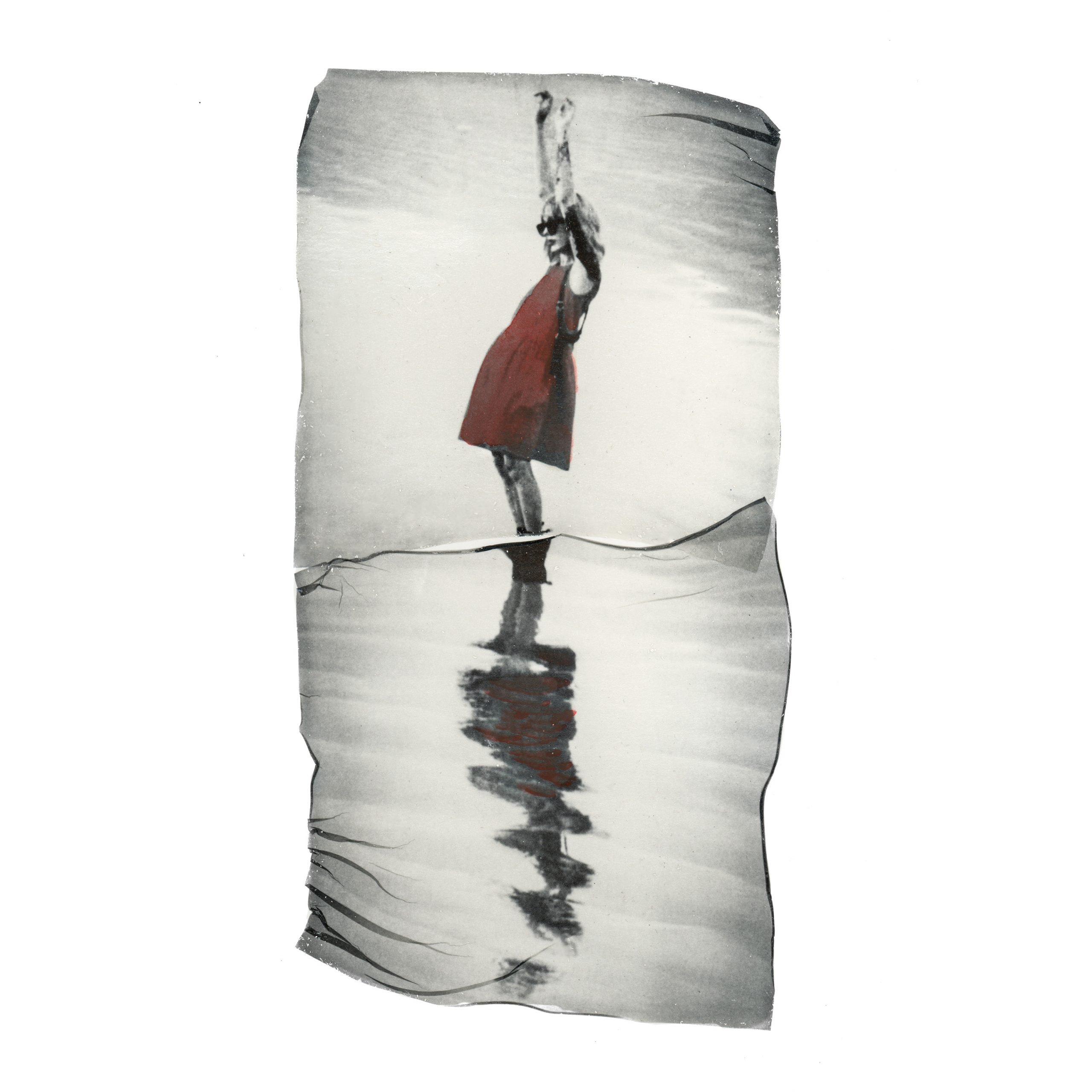
A photographer in Texas is going viral for her impressive Polaroid emulsion lift technique, earning kudos from fans for re-popularizing the process.
Using the age-old technique, Hannah Harbour, 31, makes surreal compositions by transferring multiple Polaroid images onto a single sheet of paper, and often experiments with processes like using watercolors over transfers of black-and-white Polaroids or adding gold leaf to her finished work.
“I’m amazed every time. Polaroid lifts never get old for me. I am in awe each time, as though I’ve never done it before,” Harbour said in the caption for one video which received 19 million views. “The results are never the same and that’s what I love.”
Harbour said in an emailed interview that she has been doing Polaroid transfers for about two years and learned the process through YouTube videos and reading articles, piecing together what she could find. The technique involves peeling away a Polaroid photo’s transparent top layer containing the image, then dunking it in water before lifting it onto another surface, usually watercolor paper.
“While I found a lot of information helpful, it really took doing it myself with trial and error to really refine the process,” she said, adding that there were small but important details missing from a lot of the guides online such as finding the optimal timing in the Polaroid’s development process when you can do a transfer because it’s a small window.
Polaroid lift by Hannah Harbour. Photo courtesy of the artist.
In comments to Digital Camera World, Harbour further shared how she has been fascinated with Polaroid photographs her whole life and used to rifle through old family albums to look at the instant film pictures.
“There’s something about the instant, unpredictable nature of a polaroid that is so exciting!” she said. “Digital photography is great at capturing a moment of time, polaroid’s, however, capture the very feeling of a moment, the essence and soul of the subject in the shot; it’s magical, truly, nothing compares.”
She knew right away from her first Polaroid transfer that she wanted to document her journey with the medium and so recorded and shared a video of her very first one as a reel on Instagram. Sharing it online was her first experience with virality, which was a surprise to her. While it’s still online, she called it “an awful photo” and a “subpar transfer.”
“Since that first transfer, I have refined my skills tremendously and I now feel as though I truly understand the process,” she said. “It has been a truly humbling experience to see my work gain such a following and exposure. When you create from the heart and for the simple love of the art form, I feel you have already succeeded.”
Polaroid lift by Hannah Harbour. Photo courtesy of the artist.
She thinks people have been drawn to her transfers particularly above some of her other photography because it deconstructs “such an ubiquitous medium,” adding that “there may be a hint of ASMR in the relaxing nature of playing in pools of water.”
“The liquidity of the emulsion lift process and flowing nature of the photo as it twirls in the water felt like a natural canvas for other fluid-based mediums such as inks, dyes, and watercolors,” Harbour said when asked about her experimentation in blending Polaroid transfers with watercolor.
The photographer has detailed her processes in an illustrated 15-page guide available for purchase on her website, which she released a few months ago “as a way to give back” to the place she first learned the process—the internet. She has also given basic descriptions in her Instagram posts.
“I often pause throughout the process to appreciate the small details such as the way the emulsion dances around in the water,” she said in a post. “It’s truly one of my favorite creative outlets. I find it therapeutic and extremely satisfying.”
Polaroid lift by Hannah Harbour. Photo courtesy of the artist.
Beyond Polaroid, Harbour prefers shooting film with her Canon A1 but said that she has been recently shooting more digital photos with her Olympus OM-D E-M1, from which she said she will eventually upgrade.
She also uses the Polaroid Now+ camera, which always Bluetooth control useful for selfies—which are often the basis for her transfer prints. In one video, she showed off her Polaroid Lab device which is also useful for printing digitally shot pictures from a phone, and helps reduce the cost of what she called “not a cheap hobby.” Each Polaroid photo can cost as much as $3, which adds up over time.
“I get a lot of comments saying, ‘You make it look so easy,’” Harbour said in a post. “To that I say, I promise you there’s more to it. Ninety percent of what I film while creating these lifts don’t make the cut, simply because it’s a lot of me doing the same thing over and over to achieve the result I want.”